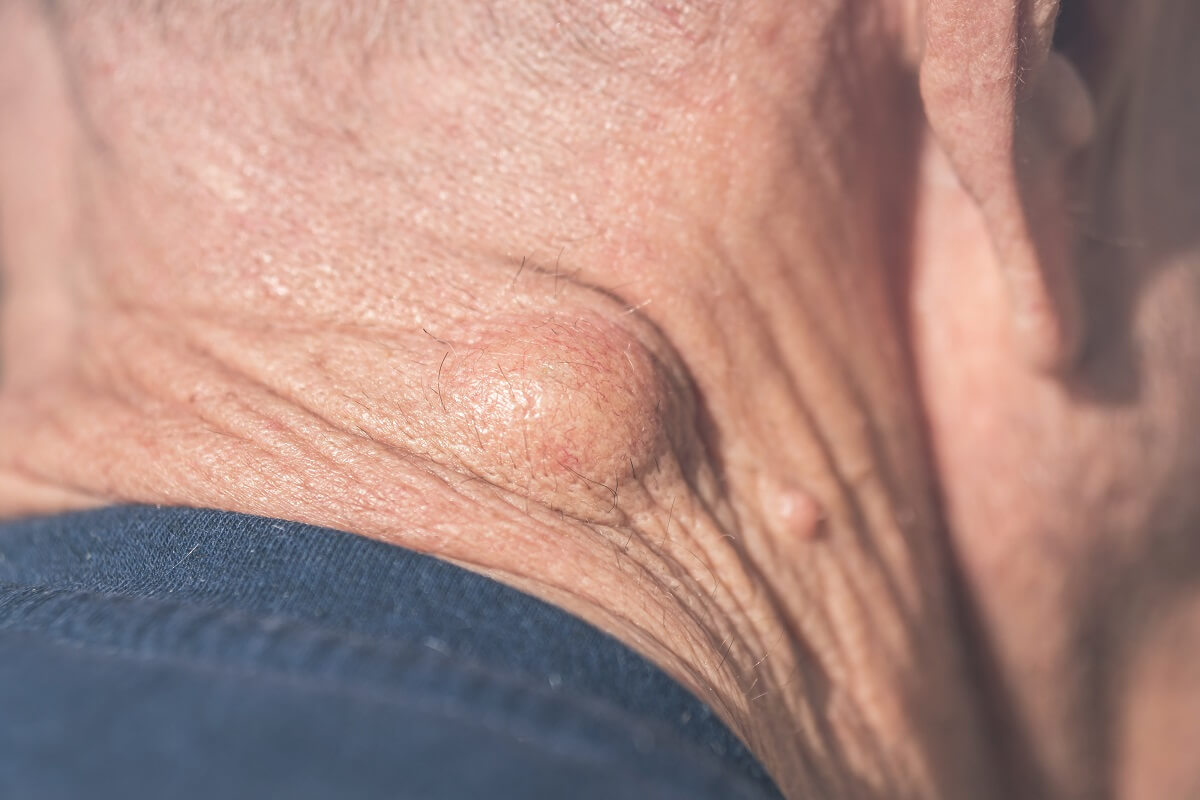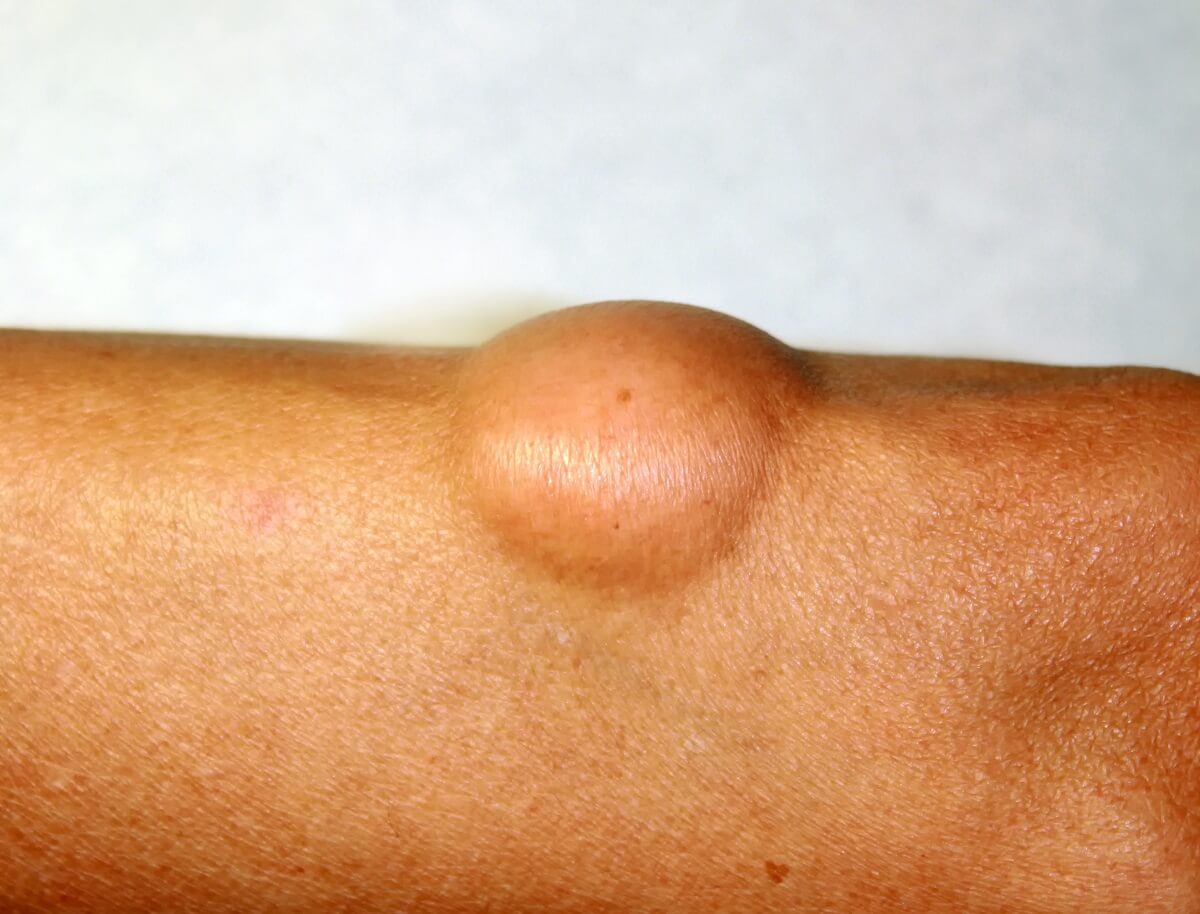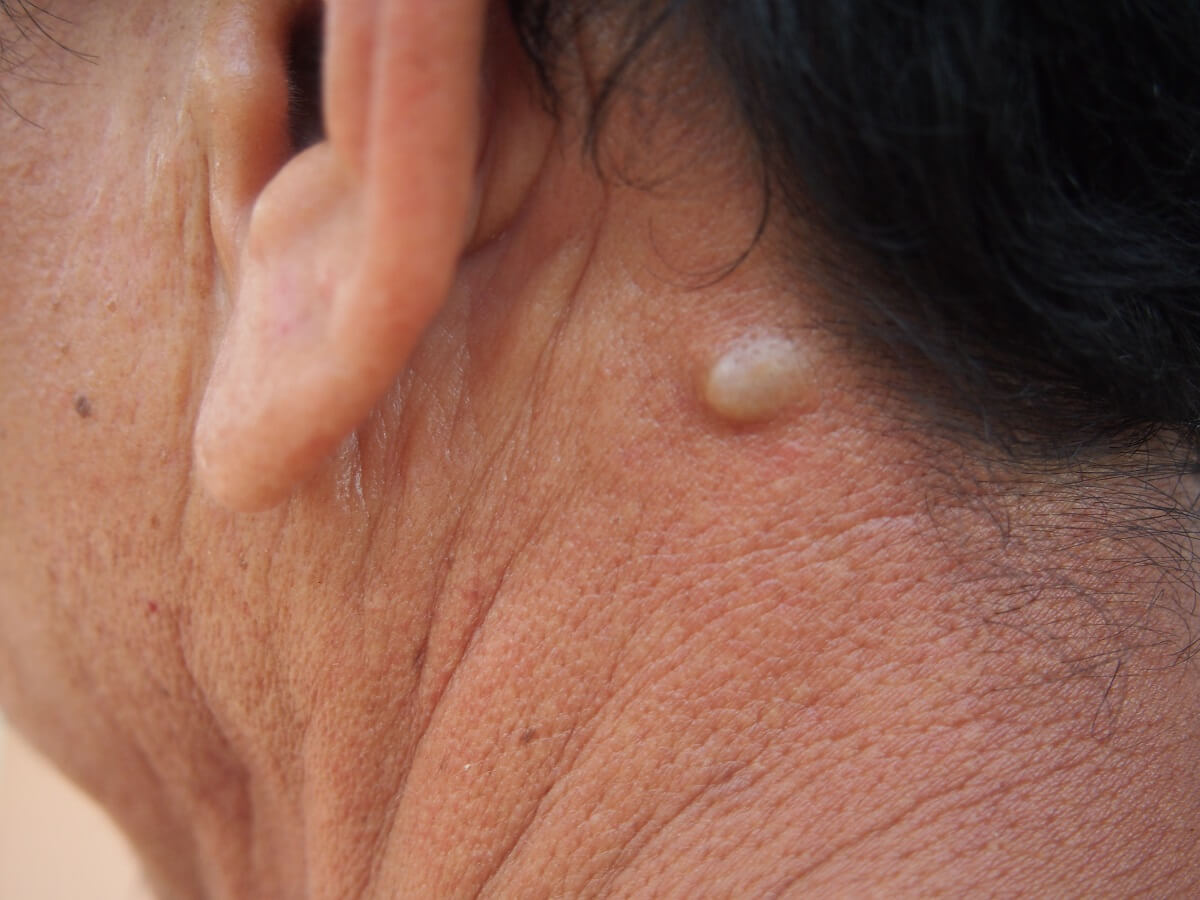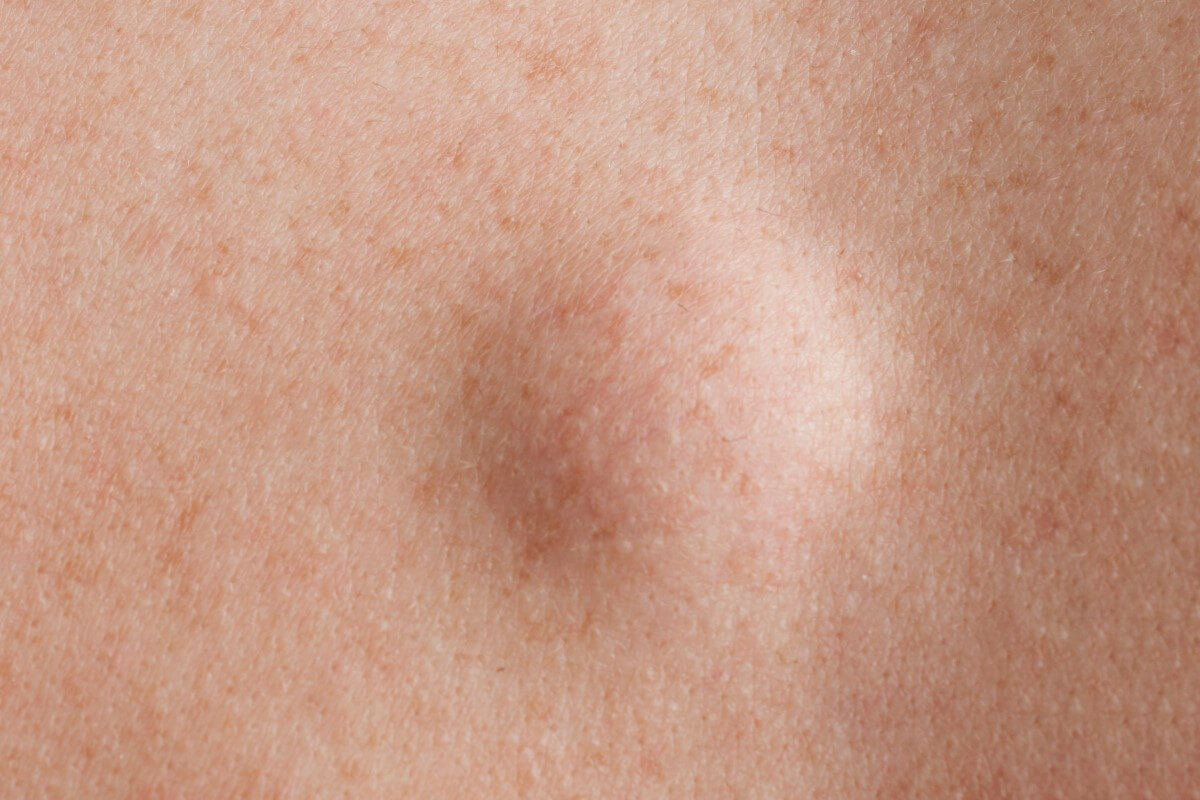Lipoma Treatments from U.S. Dermatology Partners
What Is a Lipoma?
Lipomas: Understanding & Addressing Benign Fatty Growths
A lipoma is a benign fatty growth, most often located in the deep aspect of the skin (subcutaneous tissue). These growths arise from the normal fat cells in our subcutaneous tissue and are benign (non-cancerous). However, there is a very rare form of cancer called liposarcoma, which is a malignant growth from these fat cells. Lipomas are relatively common, impacting about 1% of people. However, researchers suspect that lipoma incidence is significantly underreported.
Find This Service Near You
Characteristics of Lipomas
Lipomas develop under the skin, are soft or “rubbery” to the touch, and move easily with pressure. While they can develop on any part of the body, lipomas most often occur on the trunk (chest, back, abdomen), neck, shoulders, arms, and upper legs. Lipomas appear like a small knot or lump forming below the skin. They are typically the same color as the surrounding skin. In most cases, lipomas start out small but can grow larger over time.

Lipoma on the back of the neck.
Causes and Risk Factors

Lipoma on the elbow of the arm.
While there is no known cause of lipomas, there are a variety of factors that increase the risk of developing them, including:
- Genetics – Developing lipomas seems to be more likely for those who have one or more family members who have developed lipomas.
- Age – Lipomas are more common among people between the ages of 40 and 60.
- Injuries – Physical trauma in the area where a lipoma later develops is common.
- Injections – Injecting insulin, corticosteroids, and certain vaccines may prompt the development of a lipoma.
- Weight – Those with higher body fat levels are at greater risk for developing lipomas.
- Diabetes – People with diabetes seem to develop lipomas more frequently.
Lipoma Treatment Options
There are two main options to treat lipomas: liposuction and surgical excision.
Liposuction
This is a minimally invasive treatment option that is used to remove unwanted fatty deposits from the body, including lipomas. The procedure is performed by injecting a needle into the lipoma. A large syringe then extracts the fat. After the fat is removed, the lipoma may reform over time.
Surgical Excision
Surgical removal of a lipoma involves making an incision and removing the entire fatty deposit from beneath the skin. While this treatment option is more invasive, there is very little chance that the lipoma will recur in that area. Scarring may occur after surgical removal, but your dermatologist will do their utmost to make a small incision and conceal the scar within the natural folds and lines of the body.
Benefits of Lipoma Treatment

Lipoma on the back of the neck.
While most lipomas are completely benign and do not require treatment, there are some benefits to seeking treatment.
- Stop Growth – Lipomas grow slowly, but they can become very large if left untreated.
- Improve Comfort – Even benign lumps can be uncomfortable, especially if they’re in an area that receives regular contact or pressure.
- Cosmetic Enhancement – Lipomas (especially large ones) can look unsightly. They may draw unwanted attention and negatively impact an individual’s self-esteem.
Consultation Process
The consultation process should be straightforward. Your dermatologist will ask you questions about your medical and surgical history as well as request a list of current medications. It is important to be as thorough as possible. Even health concerns that are seemingly unrelated may shed light on skin health issues. After collecting your health history, your dermatologist will carefully examine the suspected lipoma. If there are any concerns that the lump is not actually a lipoma, your dermatologist may opt to perform additional tests before recommending treatment. The most common diagnostic test is to perform a biopsy, which involves removing a small piece of the lump and examining it under a microscope for diagnosis. Additionally, an X-ray or other imaging test may be used to examine the lump more closely. Once an accurate diagnosis is made, your dermatologist will review your options and help you make the best treatment decision.
Schedule a Consultation
If you’re concerned that a lump on your skin may be a lipoma, don’t try to address this issue on your own. Instead, contact U.S. Dermatology Partners to schedule a consultation. Once an accurate diagnosis is made, your dermatologist will provide options for addressing this concern, including excision.
*Results may vary by individual

